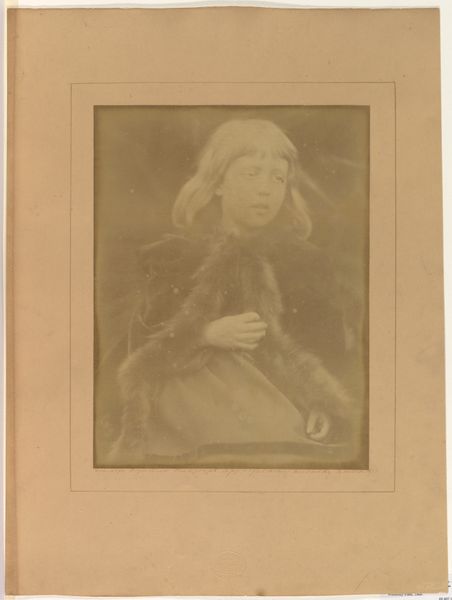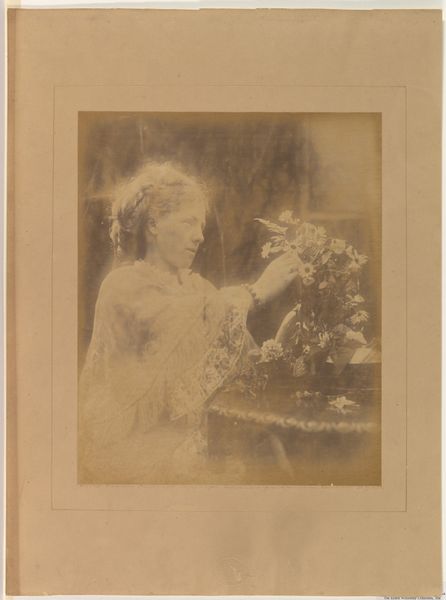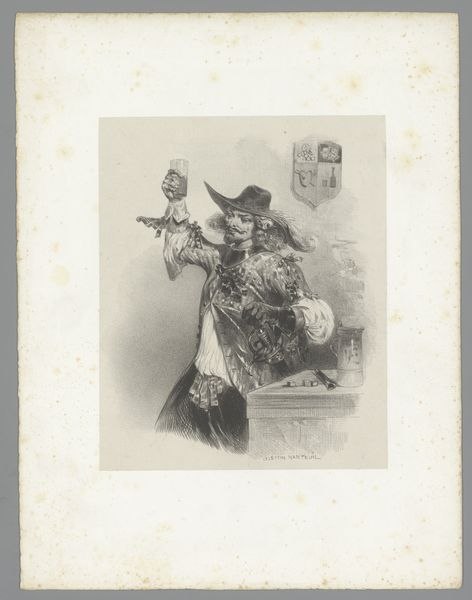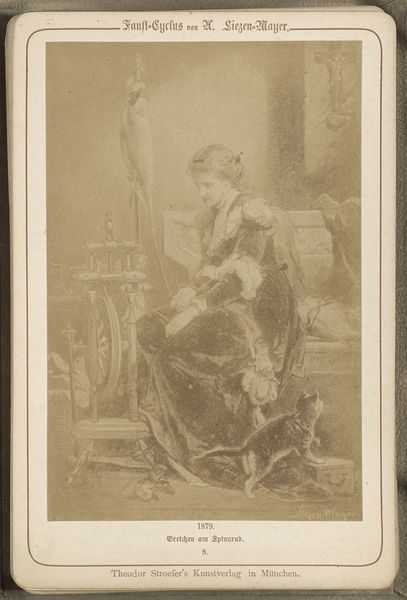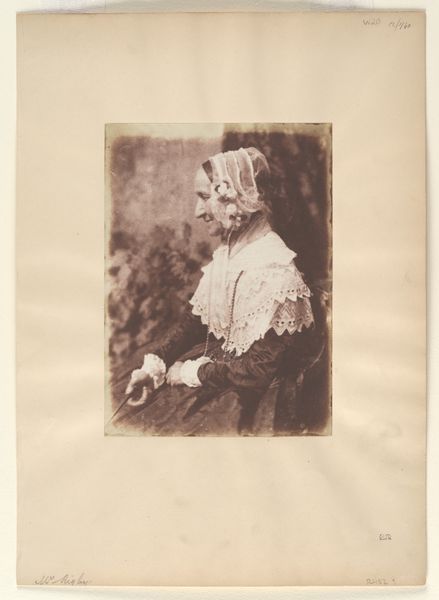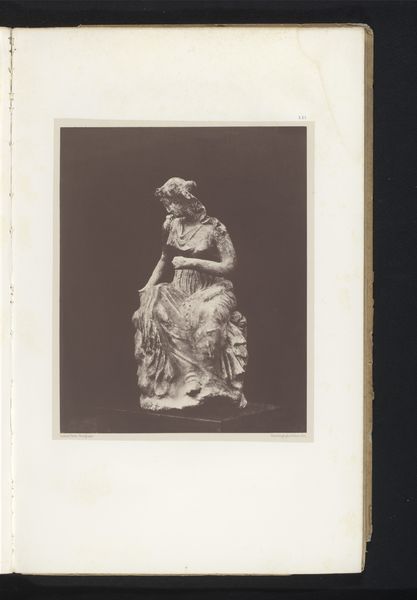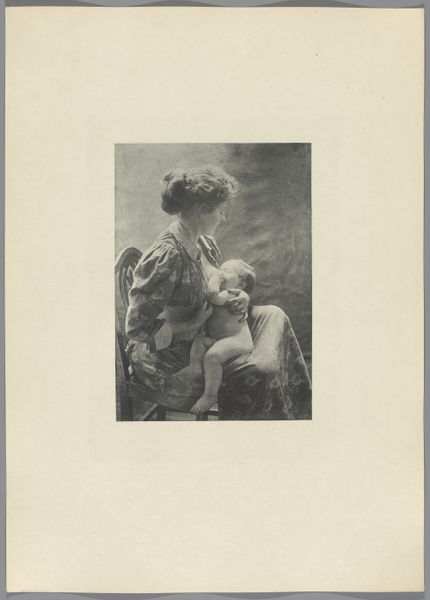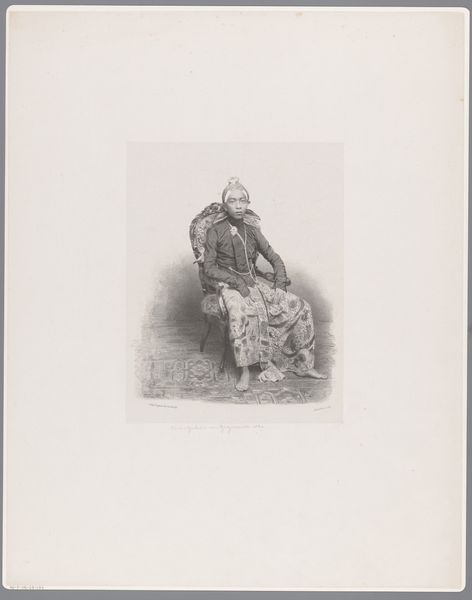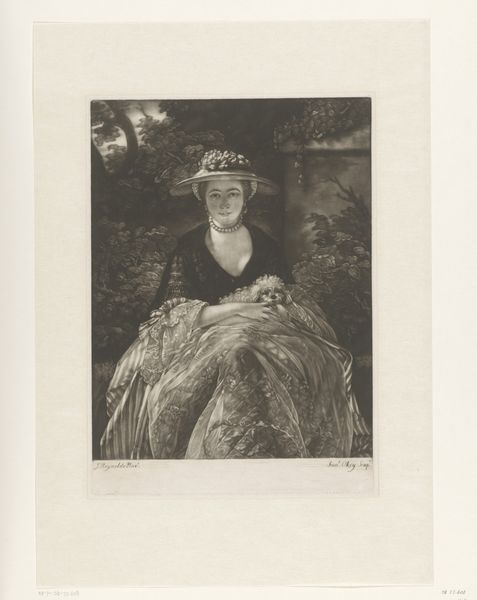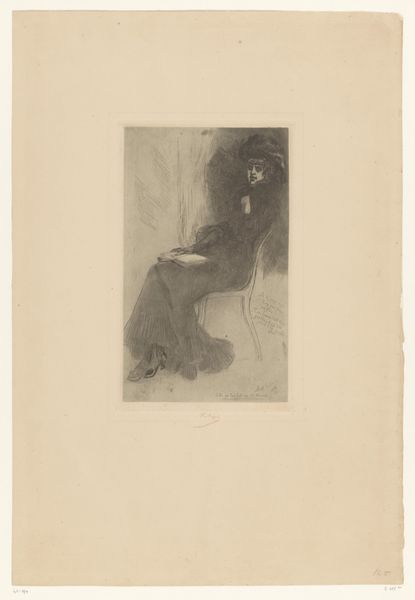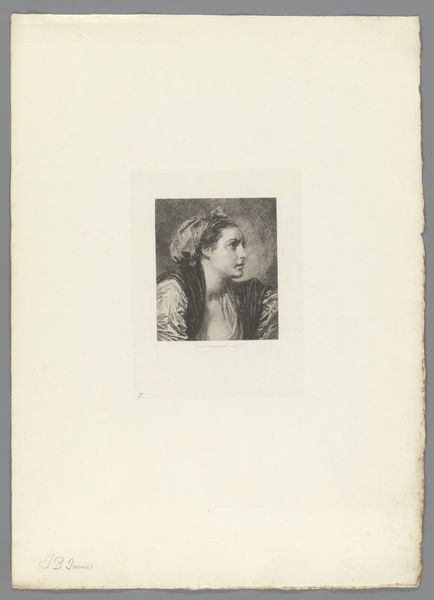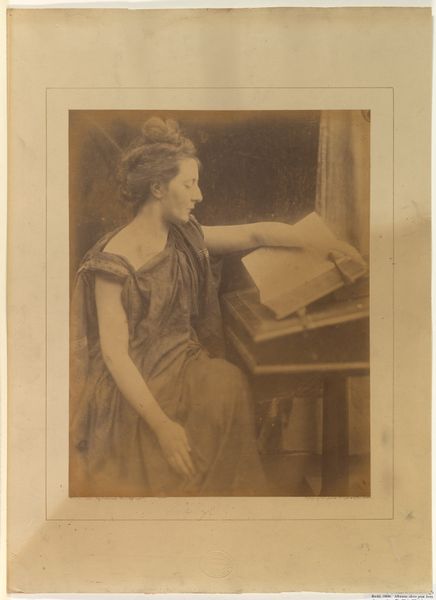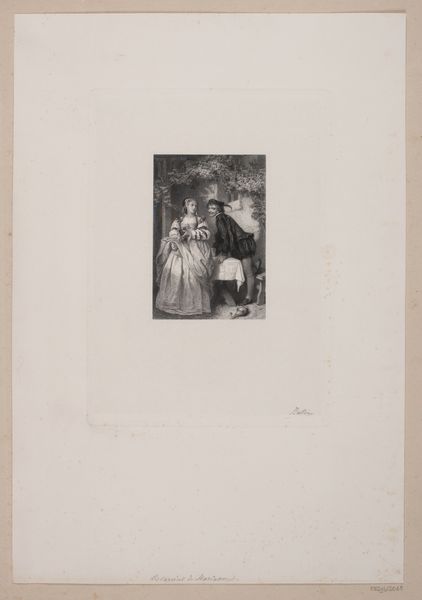
Copyright: Public Domain
This photograph, “May. Freshwater,” was made by Julia Margaret Cameron, likely in the 1860s, using the wet collodion process. Cameron was part of a growing movement of artists who sought to challenge the institutional art world, specifically the Royal Academy in London. Her soft-focus style, seen here, was derided by some critics, but it was also a conscious rejection of the sharp, documentary style favored by commercial photographers. Cameron was interested in art photography, a genre that sought to emulate the painterly effects of Impressionism. In Britain at this time, class was intimately tied to art. As a well-to-do woman, Cameron had the freedom to explore these new styles, and to invite members of her intellectual circle to be photographed, often in allegorical or mythical garb. To understand the photograph, one must examine the institutions and social conditions that supported its creation. Archival resources such as letters, diaries, and exhibition reviews help reveal the ways in which this image was both celebrated and critiqued in its time. The meaning of art, we see, is always shaped by its social and institutional context.
Comments
No comments
Be the first to comment and join the conversation on the ultimate creative platform.
